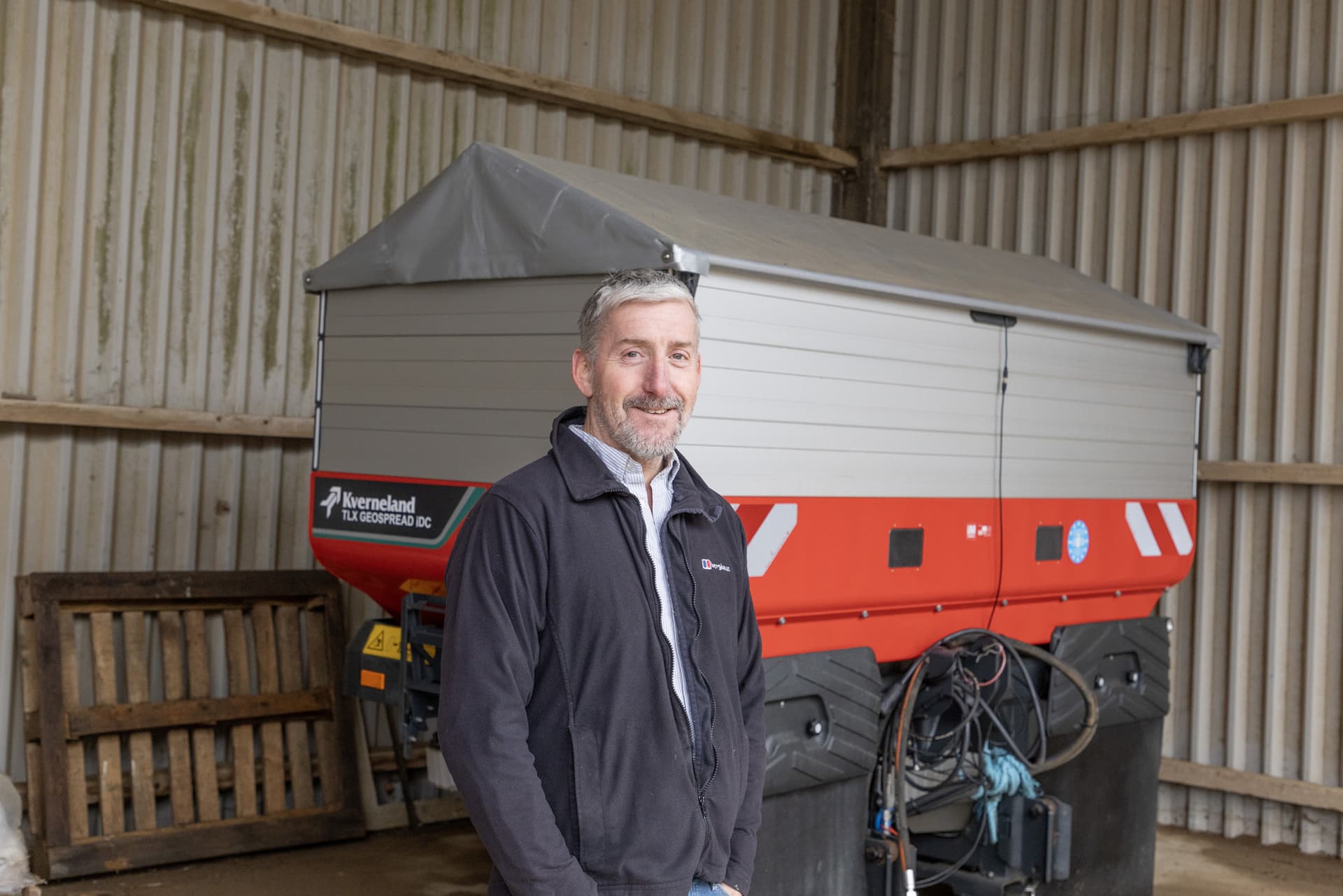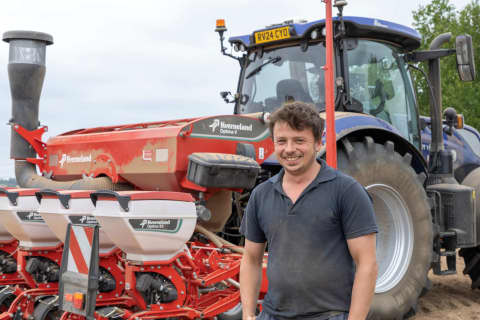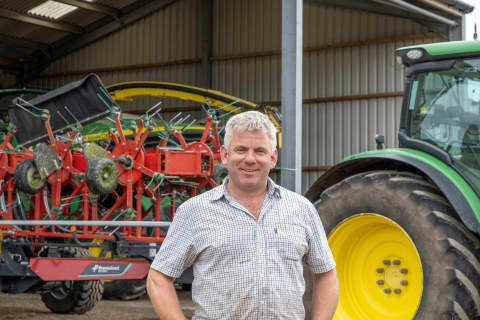In addition to the 400ha it farms at Bawdsey, UK, Mann Farms carries out contract fertiliser applications on a wide variety of crop types.
“When you apply fertiliser for customers, it puts the emphasis on the best accuracy and traceability,” explains Chris Mann. “Spreading is a process that is as intensive and important as spraying, with high-value fertilisers.” For Chris, the spreader of choice is a now an Exacta TLX GEOSPREAD iDC supplied by TNS, and this latest version features hydraulic disc drive in place of the pto shaft.
“This is now my third Kv spreader,” he says. “And they’re brilliant. I’ve had GEOSPREAD with every model bought, and the auto section control is superb. My first spreader was swapped as soon as the high-flow TLX version arrived and I’ve recently changed again for the high-flow TLX with iDC, for its simpler, safer driveline.”
Working at 24m in a wide variety of crop types including onions, potatoes, lettuce, turf, sugar beet, maize and cereals, he says application rates vary from 50kg up to 1,250kg/ha. “Some of the different base fertilisers are applied at up to 1,250kg/ha, so moving to a TLX model saw my forward speed increase from 5kph to 7kph when spreading at the highest rates,” he says.
Spreading with two Fendt tractors for their varied wheel and tyre combinations has been simplified with ISOBUS connectivity, which puts the spreader’s information directly onto the tractor terminal and avoids using multiple screens in the cab.
Chris has also been keen to eliminate the pto shaft, to avoid the challenges posed by different shaft lengths and the potential for corrosion to seize the tubes together. “It doesn’t matter how good you are at cleaning, a pto shaft has always been an area for concern,” he says. “Now I don’t have to worry about it with iDC. It’s safer, and with just hydraulic pipes, it’s also much easier to connect.” He says there is the potential for fuel savings too, through the use of lower engine revs.
“I’m adding a JCB Fastrac to the fleet for 2024, which will save time when travelling to land that can be up to an hour from the farm,” he says. “This will also improve operating efficiency and spreading output.”
He says that the high-tech spreader is steering the farm towards harnessing variable rate applications for next season. “This level of accuracy is essential with fertiliser, as I’m spreading around 900 tonnes each year, for me and my customers,” he says. “And with variable rate, I’ll be looking to make even better use of fertilisers.”




